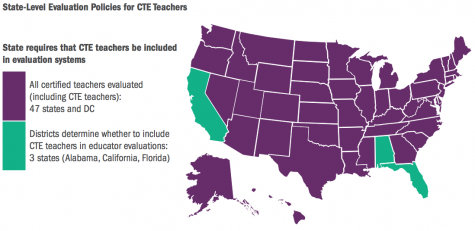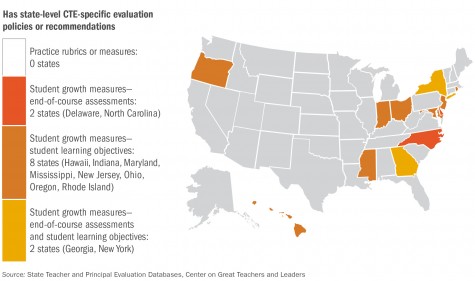CTE Teacher Evaluation: One Size Does Not Fit All
More than 7 million high school and middle school students in Career and Technical Education programs—and their 140,000 teachers—are celebrating Career Technology Education Month in February.


A recent report by Catherine Jacques and Amy Potemski from AIR’s Center on Great Teachers & Leaders focused on the importance of strong CTE educators.
“CTE teachers are uniquely positioned to improve college and career readiness for all students, and yet major federal and state education reforms, such as the Common Core State Standards, teacher evaluation, and ESEA flexibility have paid insufficient attention to direct supports for CTE teachers.”
The report, 21st Century Educators: Developing and Supporting Great Career and Technical Education Teachers, shows how great CTE teachers prepare students for both career and college. Some facts from that report:
- Compared to traditional vocational education of past years, today’s CTE courses offer a diverse range of subjects and career fields, including STEM subjects—science, technology, engineering, and mathematics. And, the distinction between CTE and academic programs is slowly disintegrating, as federal policies encourage integrating academic content into CTE.
- CTE teachers can prevent high school dropouts by engaging students in real-world learning opportunities and relevant, skill-based instruction. In fact, graduation rates for students in CTE programs are significantly higher than the graduation rate for high school students overall. Students in CTE programs have graduation rates of more than 90 percent; the graduation rate for high school students overall is just under 75 percent. CTE teachers are positioned to ensure that students are well prepared for postsecondary success in the workforce, postsecondary education, or both.
- The Common Core requires teachers to make several instructional shifts to help students meet the increased rigor of the standards, including applying literacy and mathematics skills to real-world contexts. CTE’s connection to industry and focus on skill development uniquely position CTE teachers to help students experience and master these skills.
The changing dynamics in career and technical education are also seen in students’ choices on course selection and interests. According to the National Center for Education Statistics, the five CTE areas with the most student growth in public high schools from 1990 to 2009 are communications and design (up 11 percent); health care (up 7 percent); public services (up 6 percent); consumer and culinary services (up 4 percent); and agriculture and natural resources (up 2 percent). High school CTE areas with the greatest student loss are business (down 19 percent); manufacturing (down 9 percent); computer and information sciences (down 4 percent); engineering technologies (down 3 percent); repair and transportation (down 2 percent); and construction and architecture (down .7 percent). Overall the number of students taking high school CTE courses was down about 3 percent between 1990 and 2009.
This Week: The need for many more well-trained CTE teachers and what states are doing about it.
Today's Links:
- Office of Vocational and Adult Education Becomes Office of Career, Technical, and Adult Education
- Manufacturing-Job Growth Prompts K-12 Training Effort
Catherine Jacques, research associate, and Chad Duhon, senior researcher, contributed to this post.
